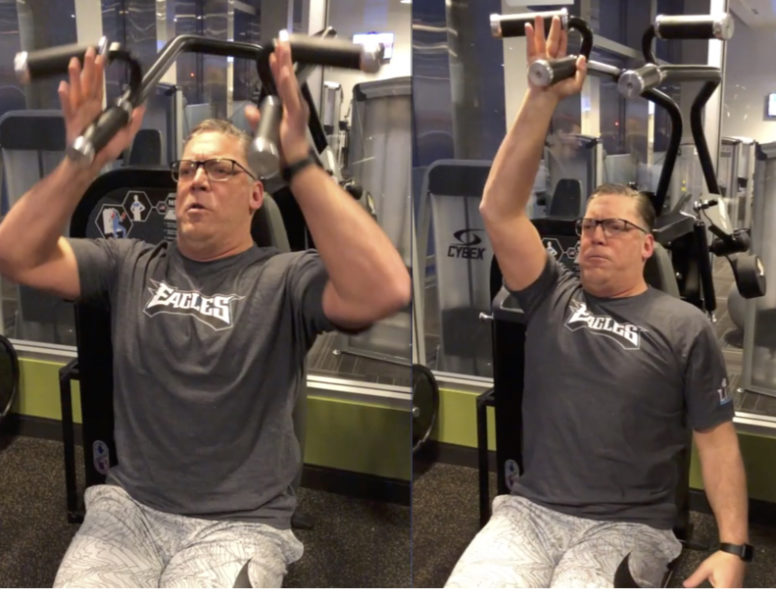Negative Accentuated Reps – An Advanced Training Technique
As we discussed in our post on advanced training techniques, some people feel it is necessary, as you advance in your training, to find ways to provide more stimulus to your muscles in order to continue to grow and change. Some people try to do this with “muscle confusion” by switching around their sets or trying new types of exercise every once in a while. All this actually accomplishes and throwing you back to the bottom of a learning curve, and it actually makes your workouts less effective. You don’t need different exercises as you progress with your strength training regimen, you need more intense exercise. This can be accomplished by continually increasing the amount of weight you work with and improving your form, but there are other ways to reach past your limit and stimulate muscle growth, as well. That’s where the advanced techniques come in, including Negative Accentuated Reps.
Check out our master list to see all of the advanced techniques we recommend. This week, we’re going to take a look at the Negative Accentuated Reps training technique.
What is the Negative Accentuated Reps Training Technique?
The negative-only protocol requires that a trainer or buddy lifts the weight, and the trainee lowers it slowly under control. This in effect allows you to get a few more reps in even while you are too fatigued to lift the weight with good form, because you are stronger during the eccentric phase than the concentric phase of the exercise. Negative Accentuated Reps, rather than just Negative-only reps, require you to lift with two limbs and lower with only one. It’s essentially a way to perform negative contraction reps on your own without the help of a partner. See the video below.
As explained in Negative Accentuated Strength Training, “In negative-only style of training, the weight is lifted for a trainee by somebody or something else… then the trainee slowly lowers the weight, performing only the negative (eccentric) part of the work. Jerking, yanking, heaving, throwing and too-fast movement are thus totally avoided… the idea is to lower the weight slowly, very slowly, but without ever quite stopping the downwards movement. At the start of a negative-only exercise a trainee should be able to stop the downwards movement if he tries… but he should not try.
Then, after several repetitions (6 or 7), it should be impossible to stop the downwards movement no matter how hard he tries; but he should still be able to control it, able to maintain (but not stop) the slow, steady, smooth, downwards movement. Then, after two or three more repetitions, a trainee should find it impossible to stop the downwards acceleration of the weight… the weight should be moving faster (not fast… simply faster than it was before), and this is when he should terminate the exercise.”
Why Do Negative Accentuated Reps?
Safety and effectiveness. Moving the weight deliberately and slowly ensures that the weight is always under control and keeps momentum to a minimum. You can probably perform more repetitions by moving quickly but you’re effectively throwing the weights and not working them at crucial moments of exertion–in other words, it’s the momentum doing the work, and not you. You might even think that you’re making progress when you’re not, because you can move more weight that way, but you aren’t actually any stronger or better off. Any time the weight is moving on its own, like when a jerky repetition gives it some speed, you have less control over the weight. The concentrated force needed to set the weight in motion increase your chance of injury. You should always be deliberate and in control of the weight, for your own benefit and safety.
Read more about the other Advanced Training Techniques:
To learn more about Negative Accentuated reps, contact a Trainer at Vertex Fitness.
Request a complimentary first session at Vertex Fitness, Voted the BEST Personal Training Studio on the Main Line
Click HERE and we will schedule a session to try it yourself
Complimentary First Workout Session



Leave a Comment